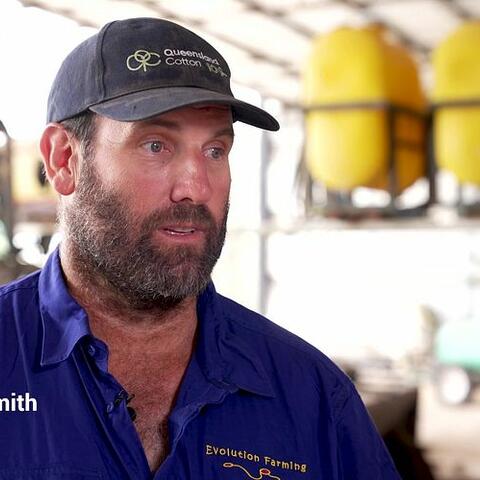Avoiding pesticide spray drift
When applying pesticides, the aim is to maximise the amount of pesticide that hits the target to control the pest and minimise off-target impacts on crops, communities and the environment.
Spray drift is the movement of pesticide spray droplets outside of the application site during or shortly after application. Spray drift can cause conflict when pesticides cause off-target damage or injury to persons, property, animals, and plants.
The EPA regulates pesticide use and spray drift impacts under the Pesticides Act 1999 . We work with communities, industry and government to ensure that people use pesticides responsibly and to reduce the occurance of spray drift incidents.
If you have been affected by spray drift, you should report the incident to the Environment Line on 131 555 as soon as possible.
Watch our short videos to learn more
- why spray drift occurs
- best practice to avoid it and
- how to meet your obligations
Videos play automatically or click on the icon at the right of the video screen to select a video.

Know what to do
To prevent spray drift, use this four-point checklist when preparing to spray.
- Plan your sprays
- Read and follow pesticide label instructions set by the Australian Pesticides and Veterinary Medicines Authority (APVMA) – it is a legal requirement.
- Ensure spray applicators are fully trained and accredited. Use the EPA's pesticide licence database to check whether your spray contractor is licenced.
Check the conditions before spraying
- Always check for neighbouring susceptible crops and sensitive areas before spraying.
- Monitor weather conditions before, during and after spraying. Avoid spraying when it’s too hot or too windy, and always check permitted weather conditions on the product label.
- Use an on-farm weather station or the Weather And Networked Data (WAND) app to monitor for hazardous weather conditions.
- Do not spray when there is a hazardous surface temperature inversion. If you can't access a hazardous inversion monitoring system, you must consider all surface temperature inversion conditions as hazardous. If you can't determine if there is a surface temperature inversion then you should not spray pesticides.
Consider your neighbours
- Notify your neighbours of your spray plan. Sometimes this is out of common courtesy, while at other times notification is required by law.
- Map and check for nearby sensitive crops or sites. Tools such as SataCrop and BeeConnected can help you to identify nearby sensitive crops and beehives and can help others identify your sensitive crops or sites.
- Adhere to mandatory buffer zones that are listed on the pesticide label.
Adjust your spray equipment
- Calibrate your spray equipment to ensure accuracy.
- Select nozzles that produce the largest spray quality possible while maintaining efficacy and meeting label requirements for droplet size. Even one size change makes massive difference.
- Keep the boom height as low as possible and slow down – high booms and fast travel speeds significantly increase potential for drift.
- Avoid using adjuvants that decrease droplet size and increase drift risk.
More information
- Information on reducing pesticide spray drift can be found on the NSW Department of Primary Industries (NSW DPI) website.
- The Grains Research & Development Corporation (GRDC), have created a manual and fact sheet providing farmers with information on understanding and managing changing weather conditions to safely and effectively spray pesticides.
- The APVMA has developed Operating principles in relation to spray drift risk which describes the methods and scientific principles that the APVMA uses to assess and manage spray drift.
- See Cotton Australia’s best practice guidelines on spray drift.
- CropLife’s StewardshipFirst initiative includes best-practice product application guides such as SprayBest and MyAgCHEMuse, to help farmers, spray contractors and environmental land.